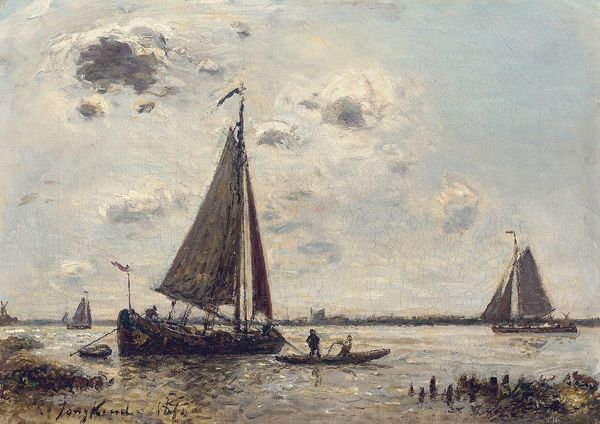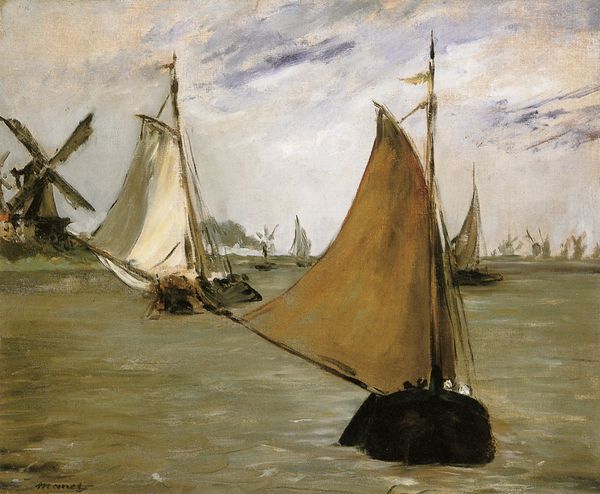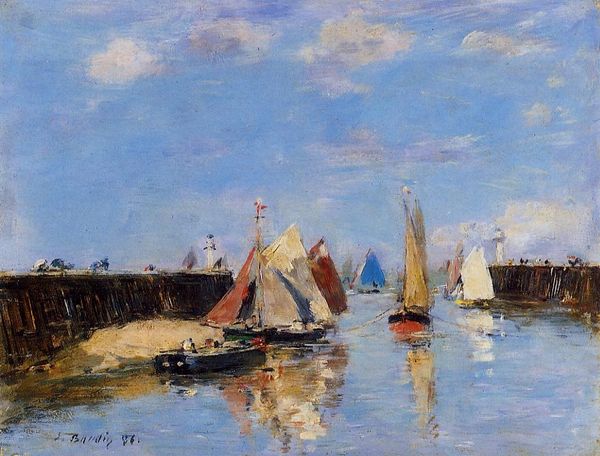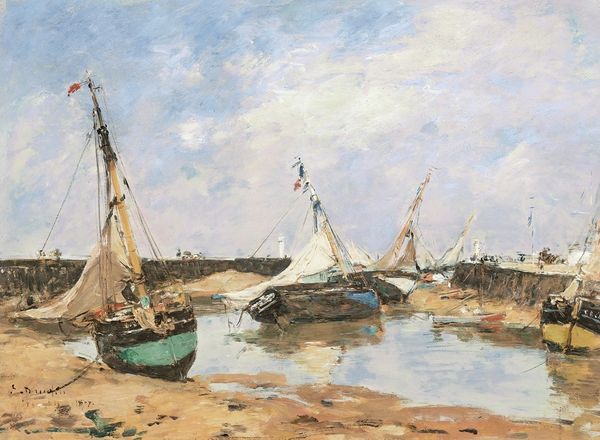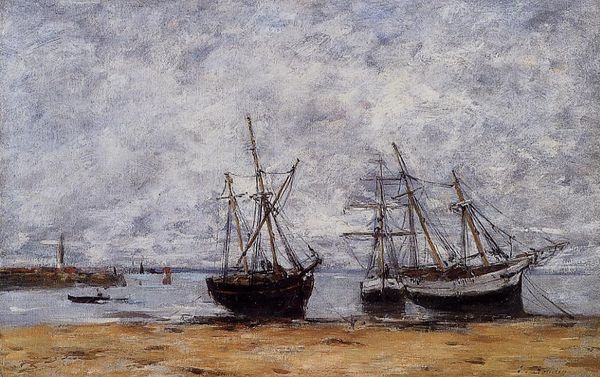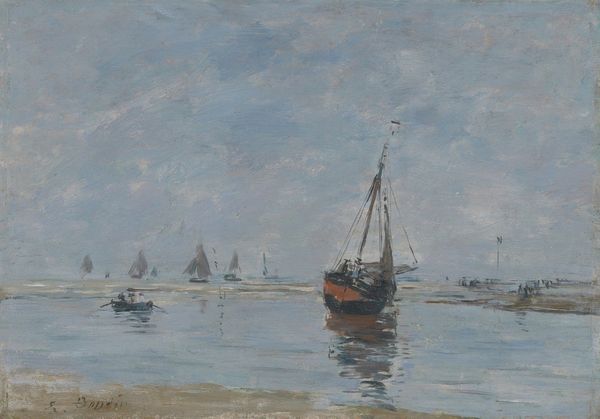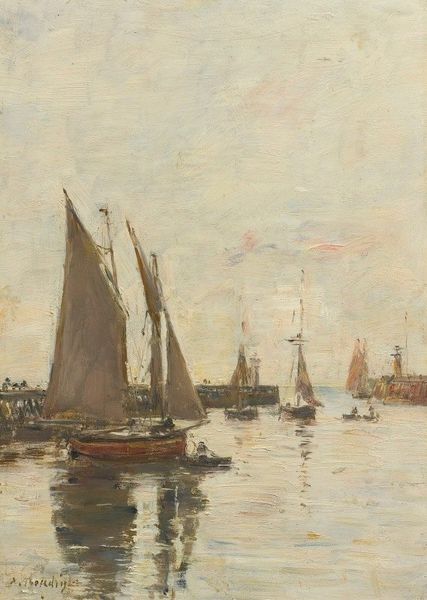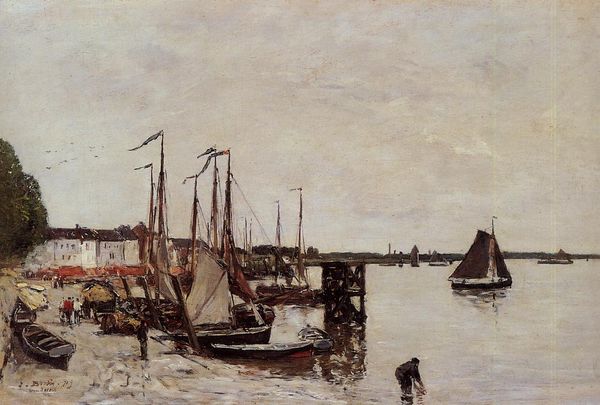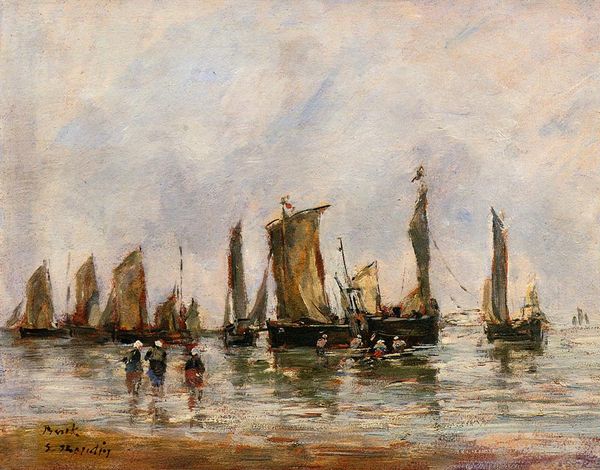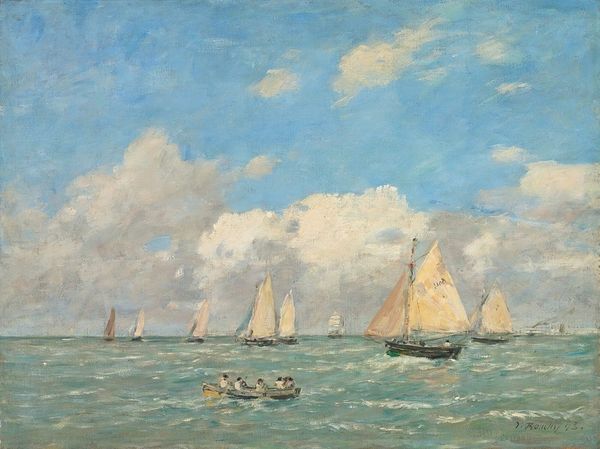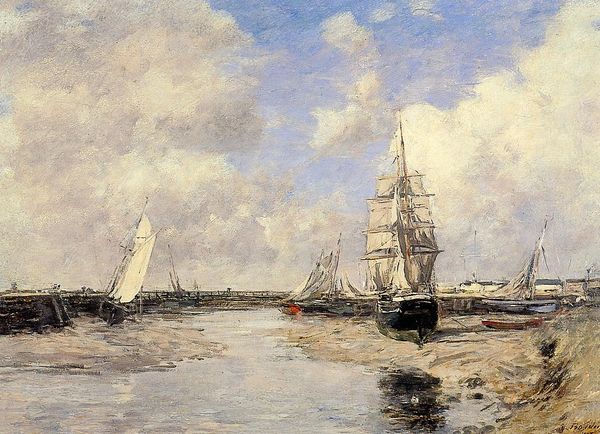
painting, plein-air, oil-paint
#
boat
#
still-life-photography
#
ship
#
painting
#
impressionism
#
plein-air
#
oil-paint
#
landscape
#
impressionist landscape
#
oil painting
#
water
Copyright: Public domain
Editor: We're looking at Eugène Boudin's "Sailboats near Trouville," painted in 1873. It’s an oil painting, and there's a lovely, hazy quality to the light. What can you tell us about this scene? Curator: This painting isn't just about pretty sailboats. Boudin's interest in portraying leisure actually intersects with burgeoning industrialization. Trouville was becoming a resort destination precisely because of the expanding railway lines. Consider how the ease of access changed the economy and social fabric of the town, creating a market for seascapes. Editor: So, it's more than just a calm beach scene; it’s capturing a specific moment in the town’s development? Curator: Exactly! Think about what went into creating those boats and catering to the tourist trade. Boudin's light, airy brushstrokes might obscure the labor, but we need to acknowledge the complex network of production, from sailcloth manufacture to the fishing industry. And notice the thick application of the oil paint - it speaks to its own materiality. Editor: It's fascinating to consider how this seemingly simple image relates to larger economic forces. Were tourists purchasing scenes like these, sort of a visual souvenir of their labor-free vacation? Curator: Precisely! The canvas itself is a commodity. Reflect on the social context surrounding art's consumption. Was Boudin himself participating in—or even critiquing—that system? We have to examine this artwork as more than merely a representational picture. It's an artifact. Editor: I hadn’t thought of it that way before. It certainly changes how I see the painting. Curator: Absolutely. By focusing on materials and their contexts, we gain insight into both the physical production of the art and its connection to a particular historical moment. It challenges the notion of the lone genius artist working in isolation.
Comments
No comments
Be the first to comment and join the conversation on the ultimate creative platform.

